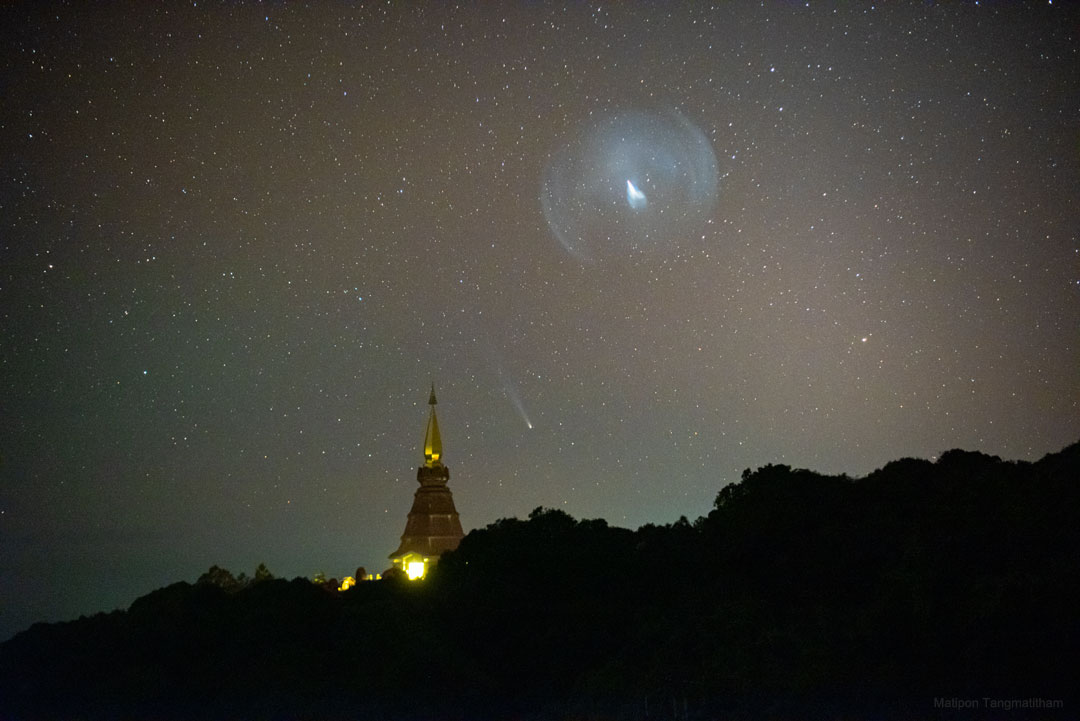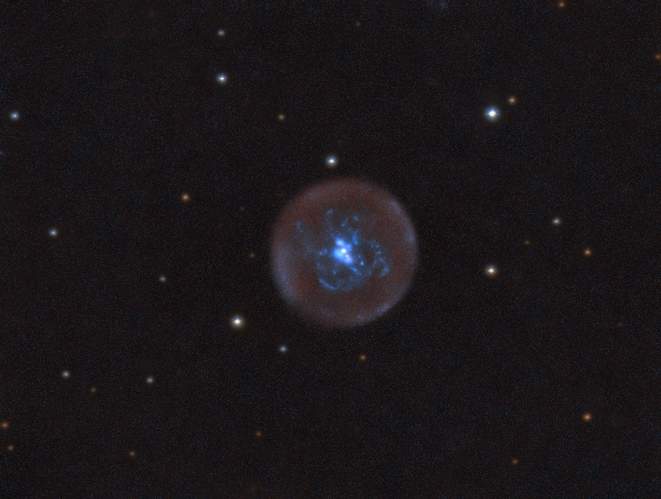Hi, the original photographer here. Allow me to explain some of the issues that have been raised.
The image was shot exactly at 12:57 UTC from Chiang Mai, Thailand. The coordinate is (if anybody's asking): 18.55387688510697, 98.48196698124625
Yes, this is a single shot. Barely any processing was done on this image. Besides the overall adjustment there was only one brushing tool to lower the overblown highlight of the plume.
And yes, the plume indeed belong to Ariane 5 that boosted JWST. I've shot another Ariane 5 from this same location before (750 m away, to be exact). You can actually find it from past APOD
https://apod.nasa.gov/apod/ap140212.html. So when I heard of JWST launch being 19:20 local time, I knew that it's within the right window to see JWST and comet at the same time. I had already planned to go there to shoot comet at some point anyway so I arranged for that date hoping to see both. Although, I figured it would be highly improbable for both of them to line up in the same shot. Boy, am I glad to be wrong.
Now, on to the question: How is it possible that the rocket that ended over Africa is seen by Thailand? You're right to ask that question. I had the exact same question when I first spotted the rocket 7 years ago. The answer is that you're not seeing the upper stage of JWST as it BURNS. You saw the upper stage after it has already separated from JWST. What you see in this image is not JWST itself, but the spent upper stages and its exhaust.
You see, the purpose of the upper stage is to boost JWST to elliptical trajectory to reach L2, after which JWST will gain enough velocity to just coast there. (Let's keep in mind that in order to do so it must also do some crazy maneuver tilting down towards the atmosphere to graze it a bit, too) Now, right at separation both the upper stage and JWST would have the exact same trajectory. Since there was no other burns that's going to happen until the first course correction some 12 hours later, the upper stage would also have the same elliptical trajectory that JWST has, minus some kick it gained during separation. This along with all the rocket engine exhaust would just float along with JWST, and that's exactly what was seen all across Thailand. (It made quite a headline over here).
What I observed with naked eye was a bright comet-like object traveling almost head on from SW direction. West made sense because rocket were coming from French Guiana. And South, because we are slightly North of the equator. First it had a highly visible circular plasma "envelope", likely from atmospheric glow from the exhaust shocked into it. Then it drifted upward rather quickly (satellite speed) and as it does the plasma envelope just fade away. Then it slowly drifted upwards towards constellation Cetus and slowly fade away. I kept tracking it with my telescope (that I brought to shoot Leonard) for a while before I stopped. It disappeared almost straight up from where we were. This kind of make sense considering it was doing elliptical trajectory with apogee aimed at L2, it would have to "depart" Earth somewhere on the night side, but towards the terminator. So perhaps something like 20:00 local time which was exactly when it was observed.
It's definitely once-in-a-lifetime experience (and a crazy amazing shot to get). I don't think I'll ever be able to observe comet Leonard with JWST launch ever again!
 Comet Leonard behind JWST Launch Plume
Comet Leonard behind JWST Launch Plume
